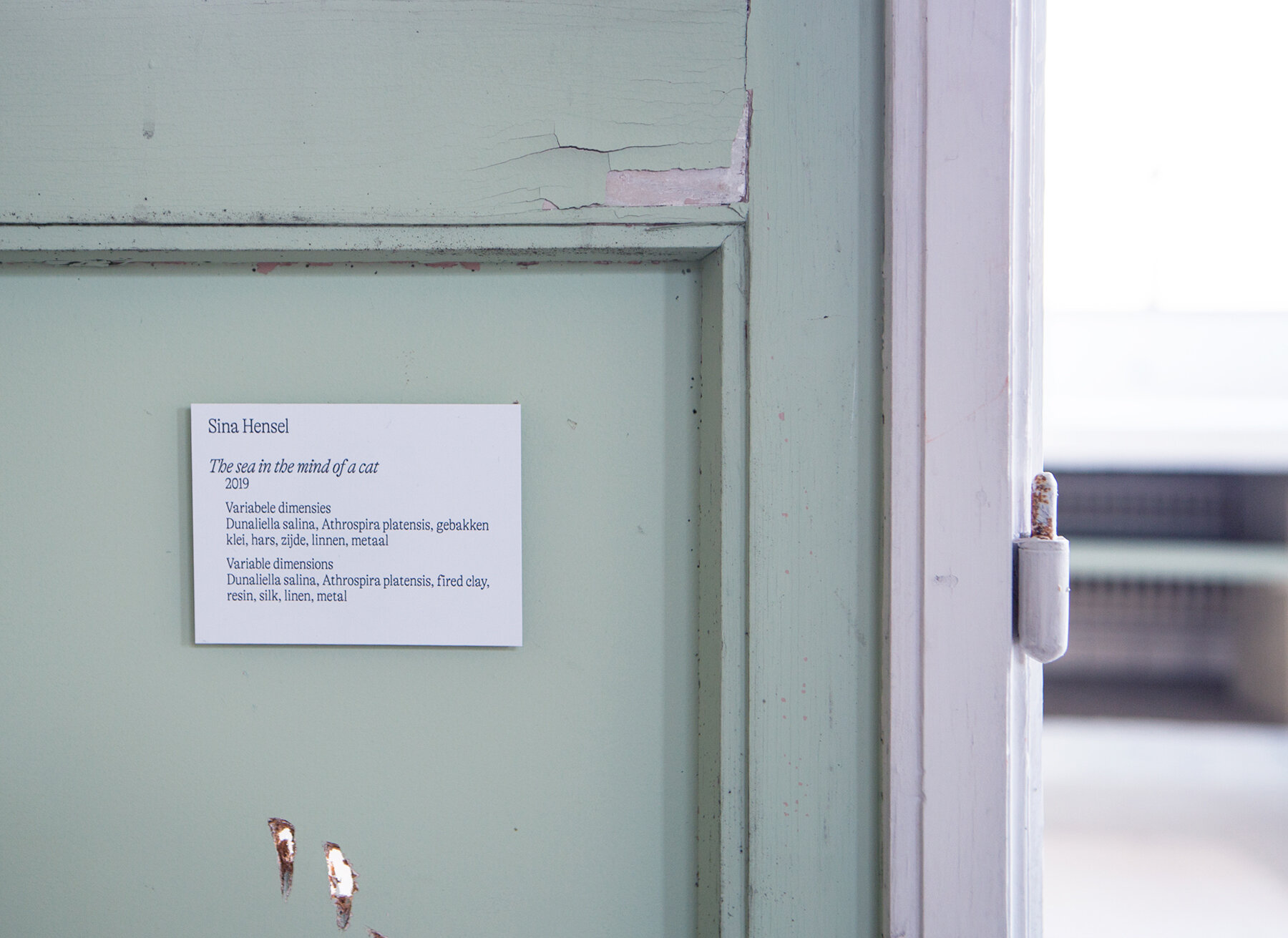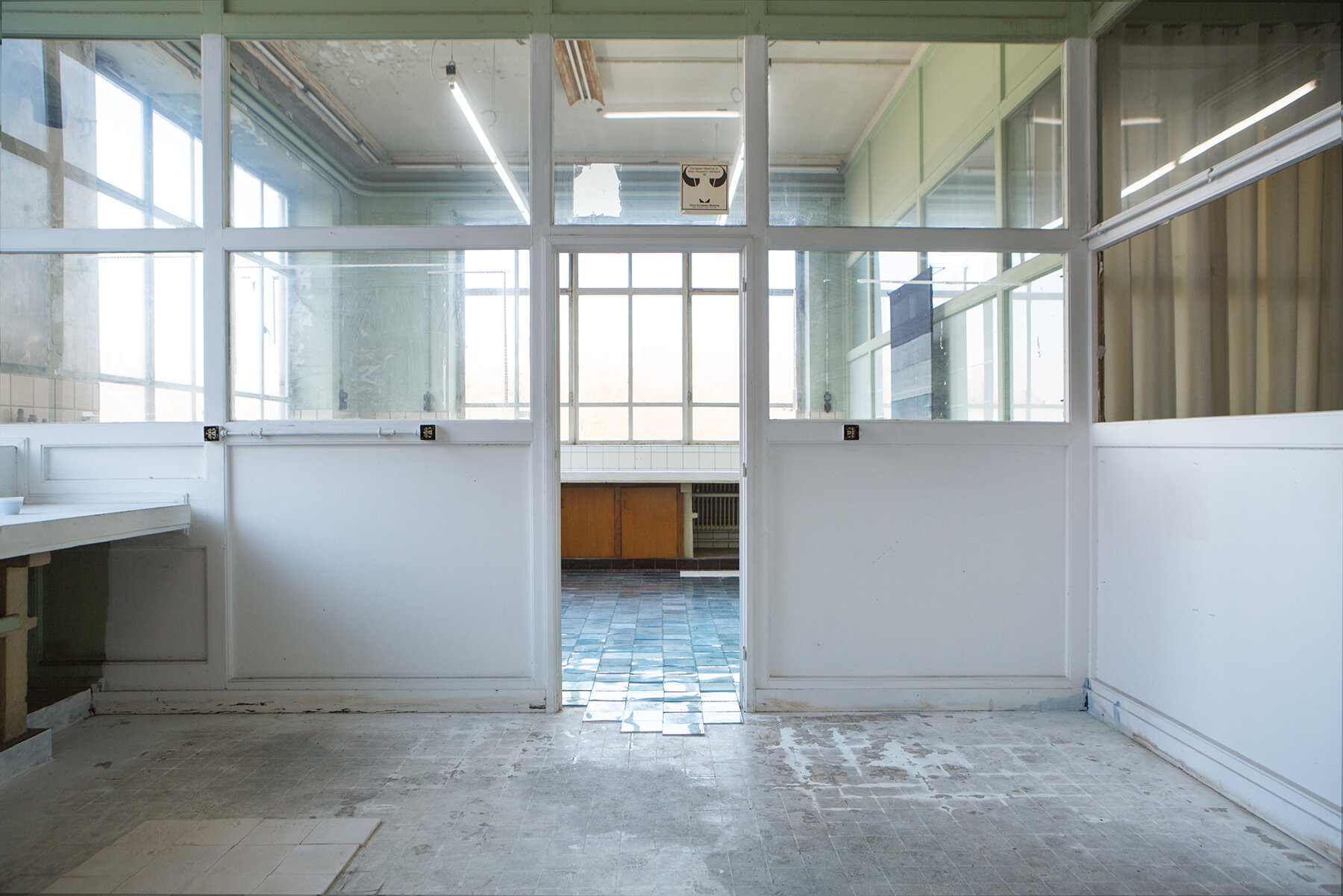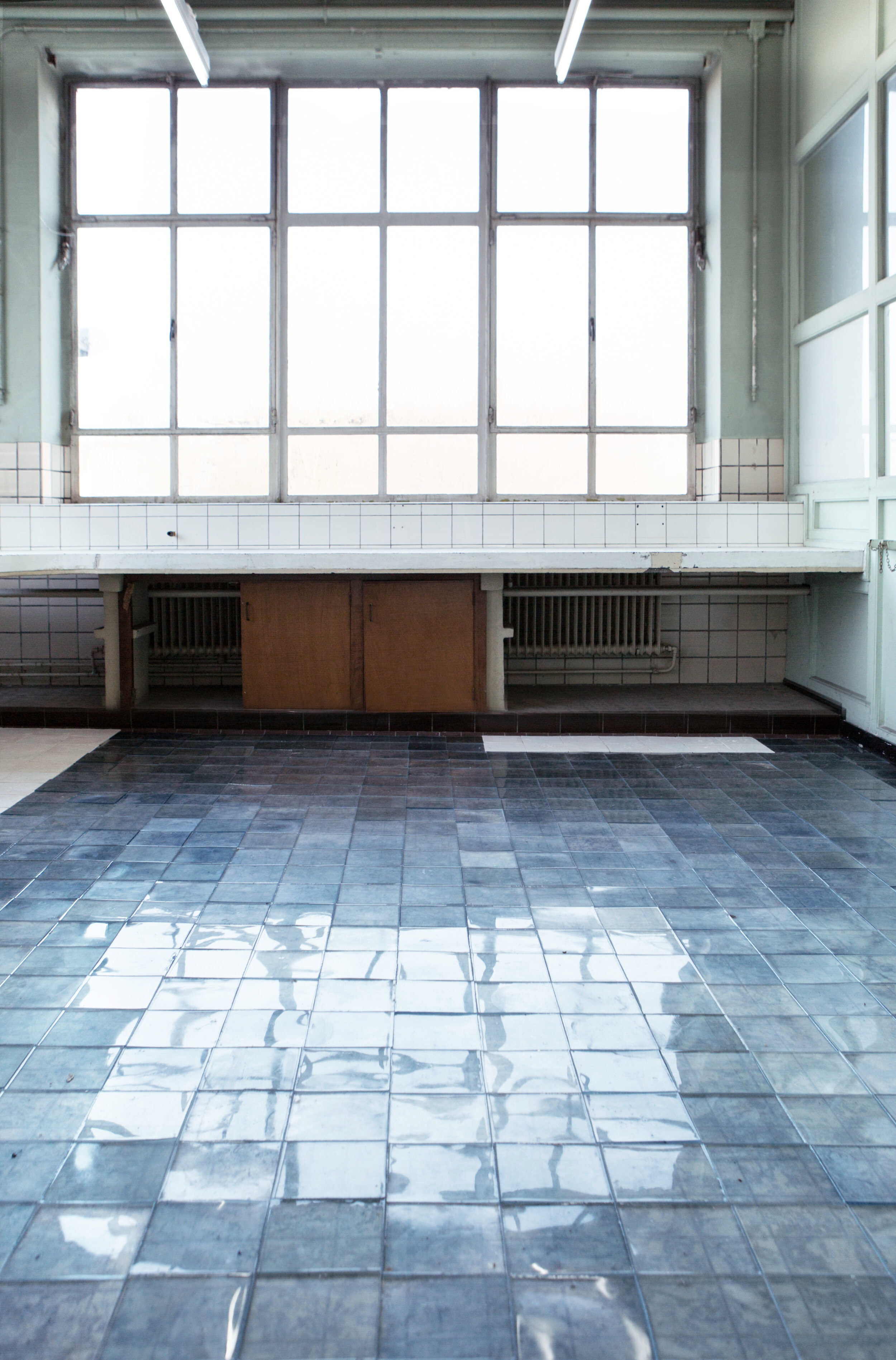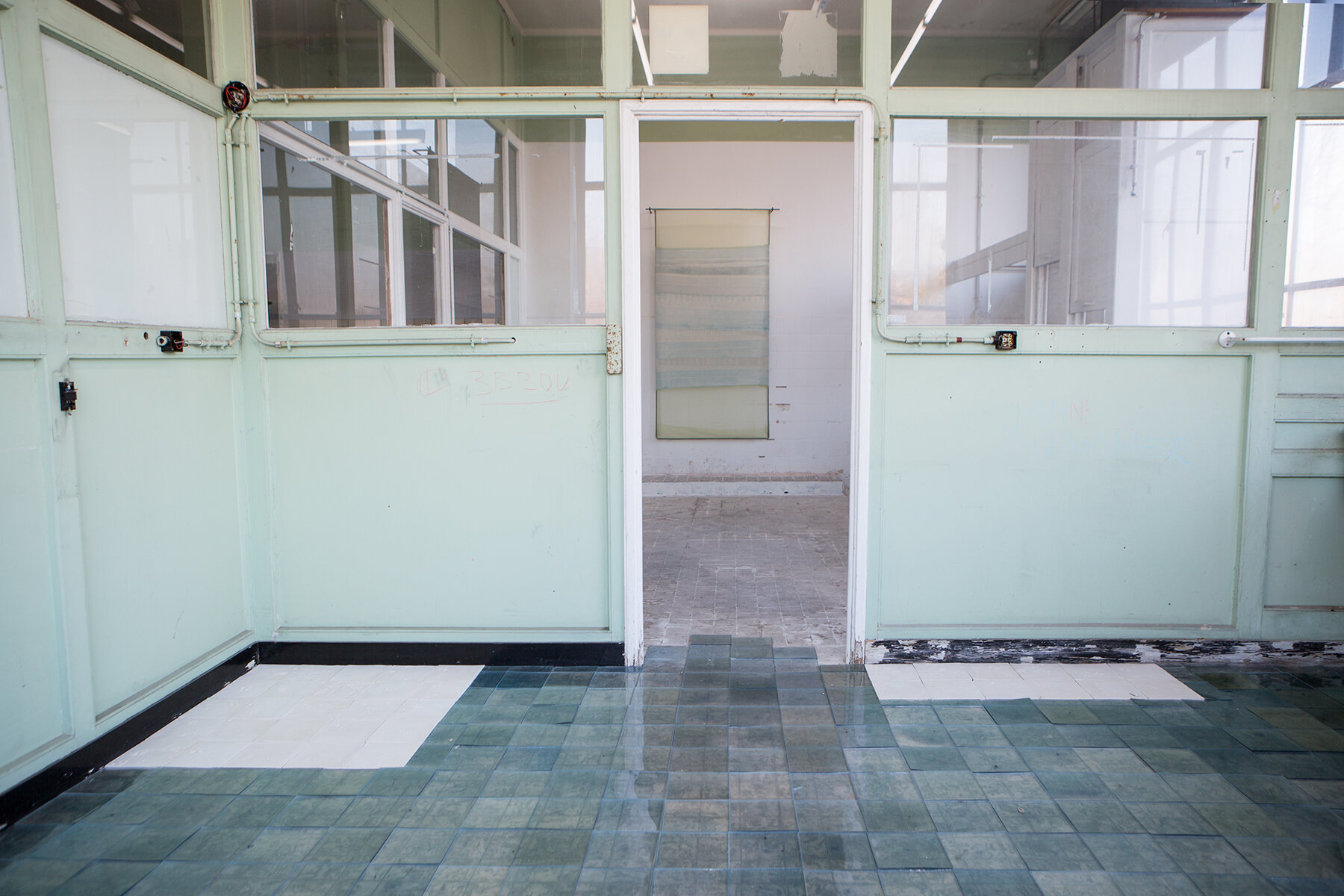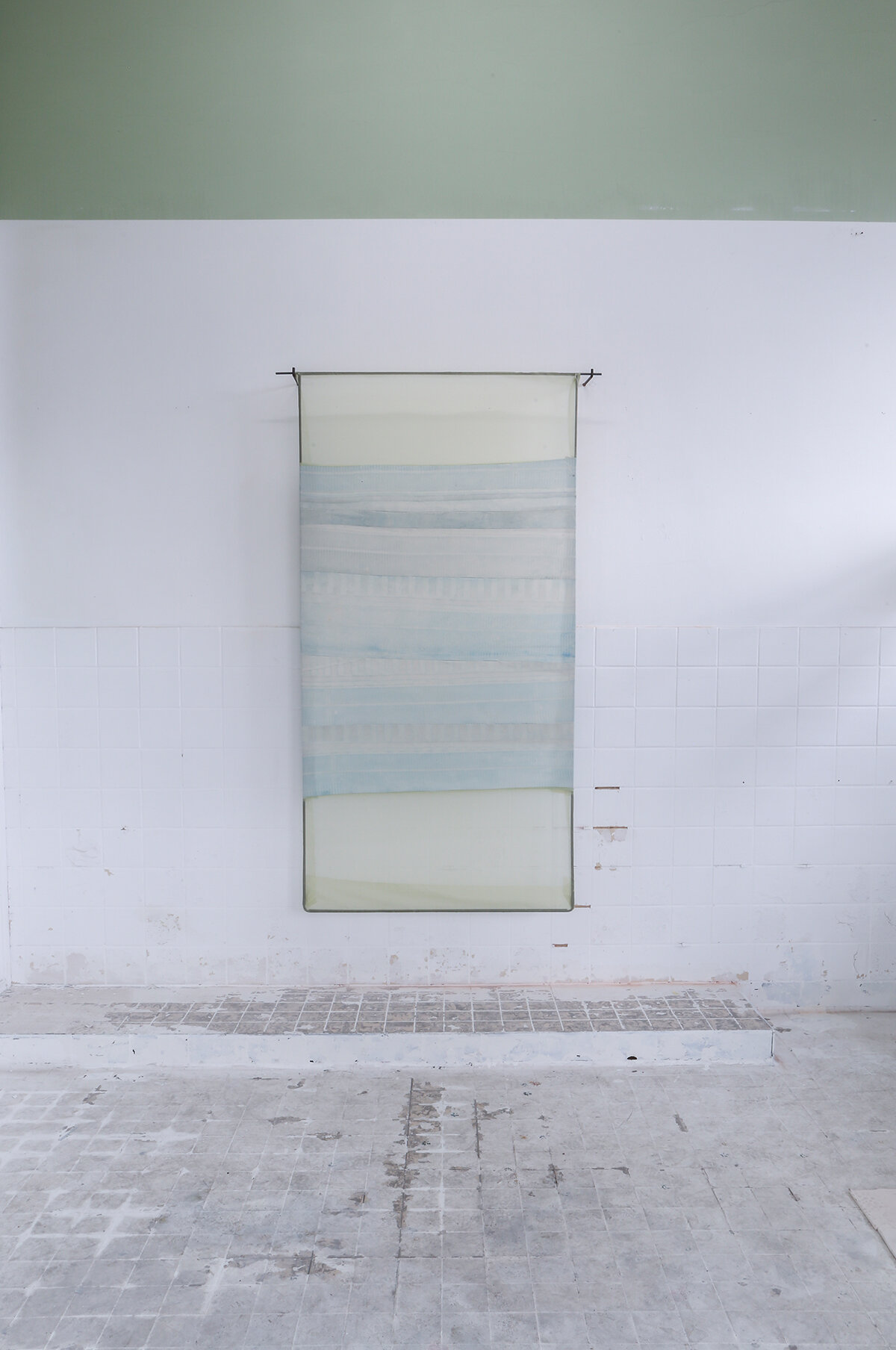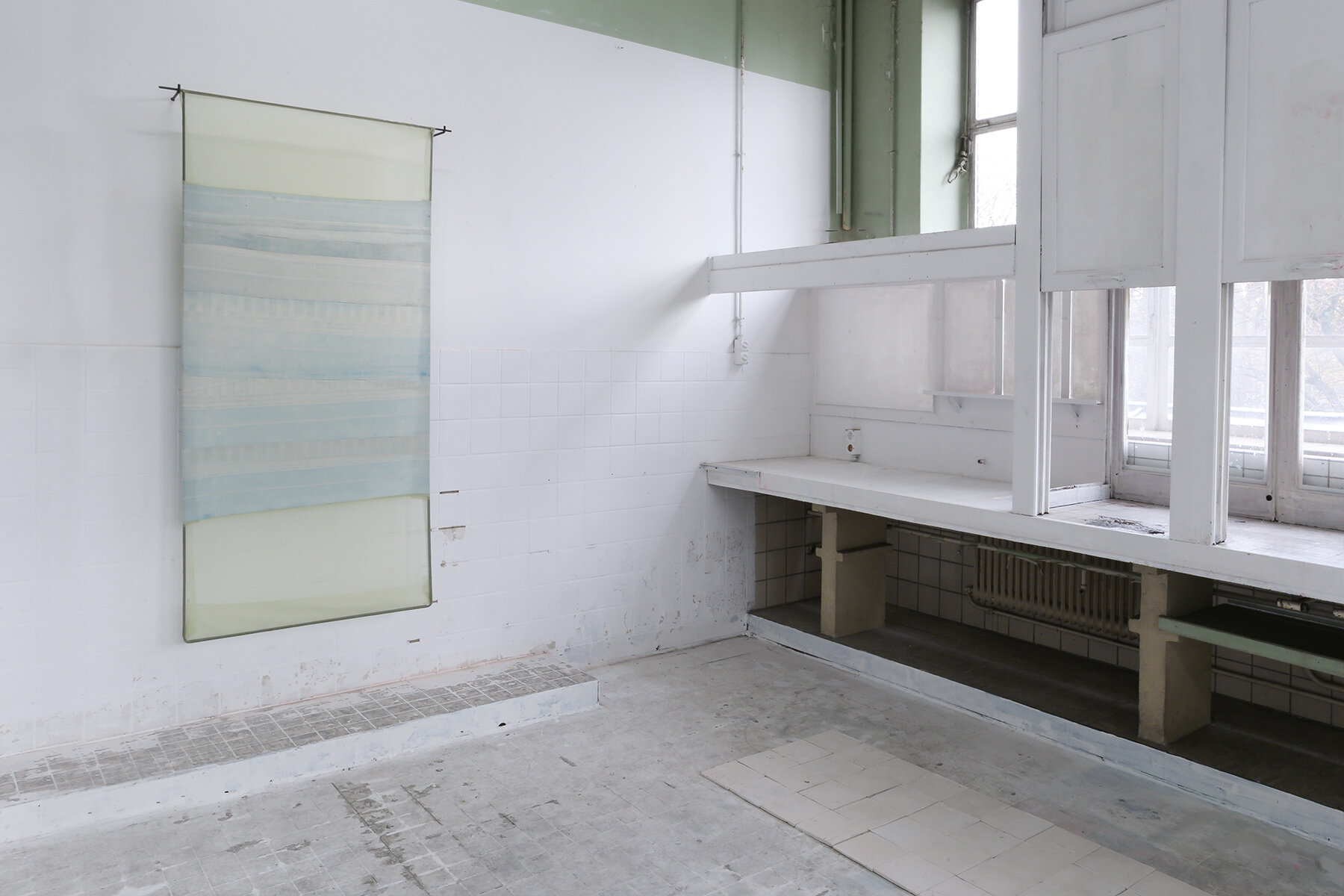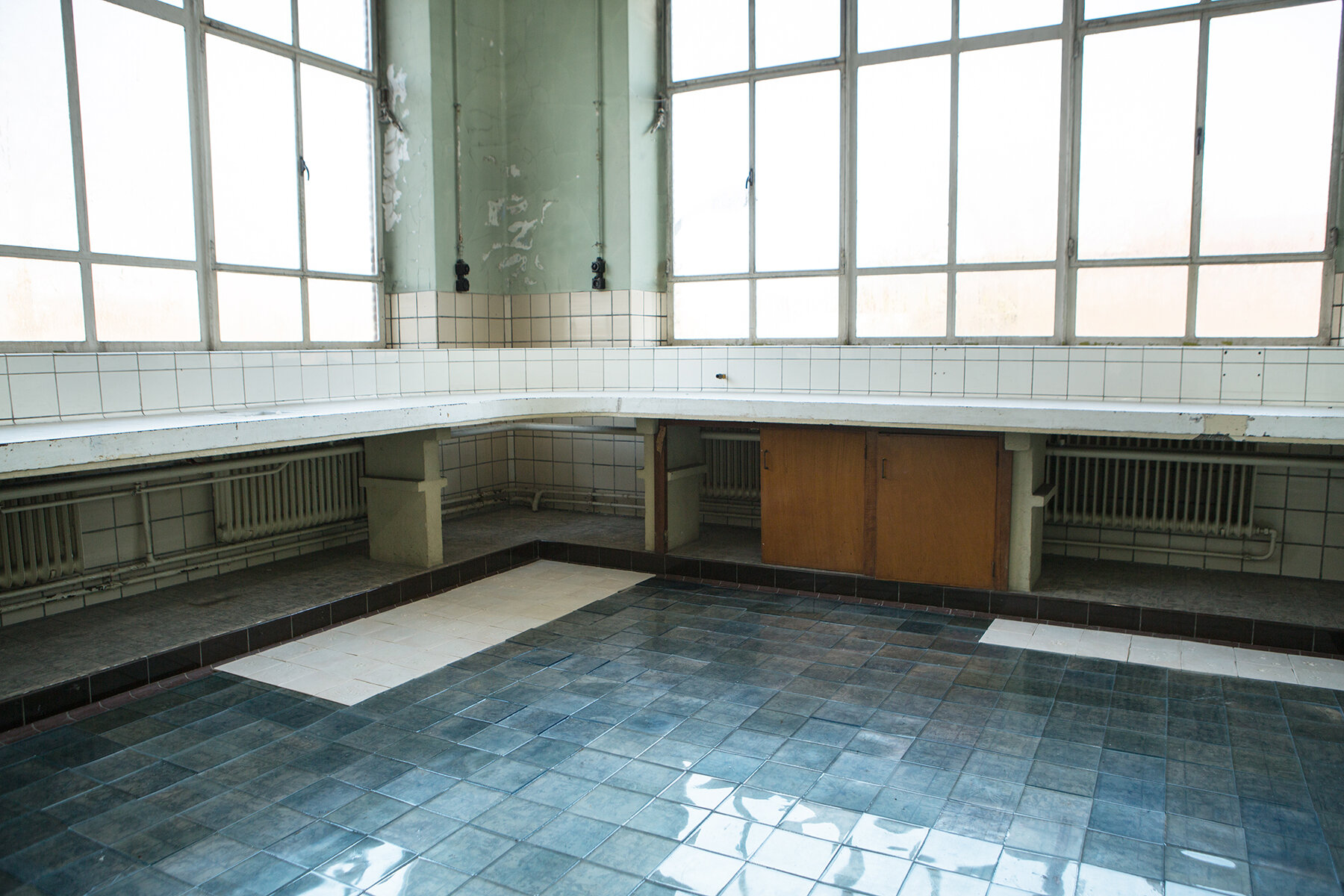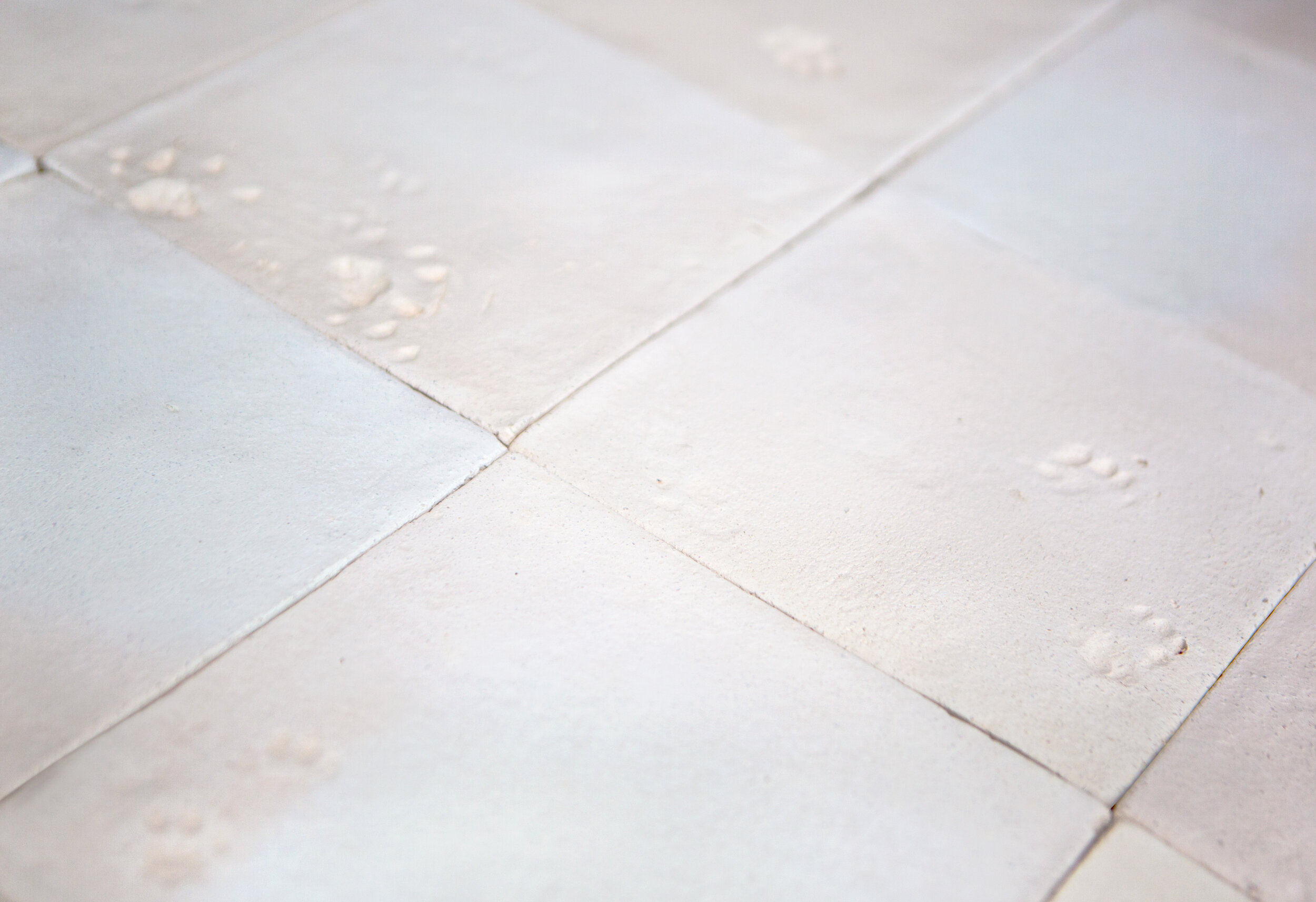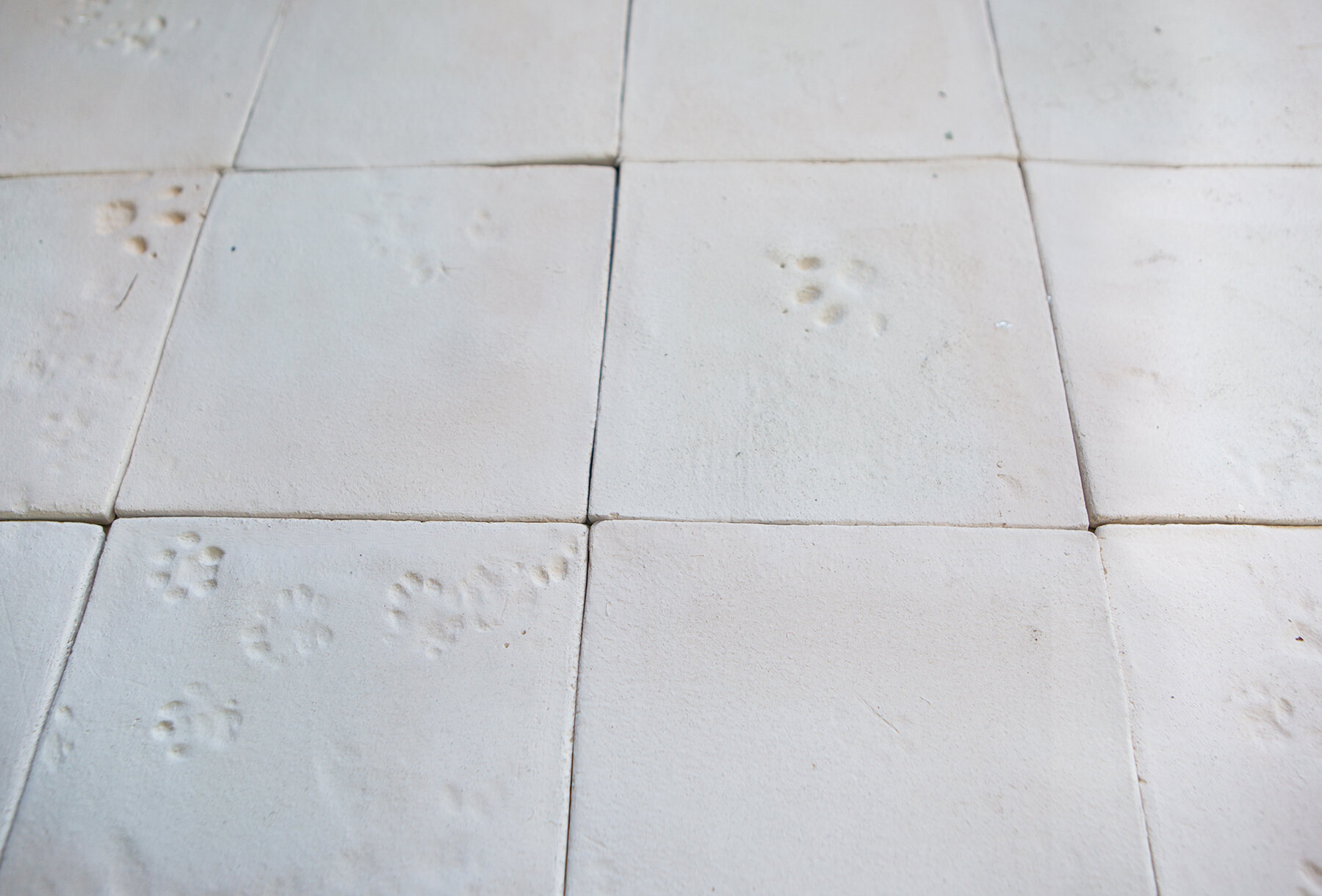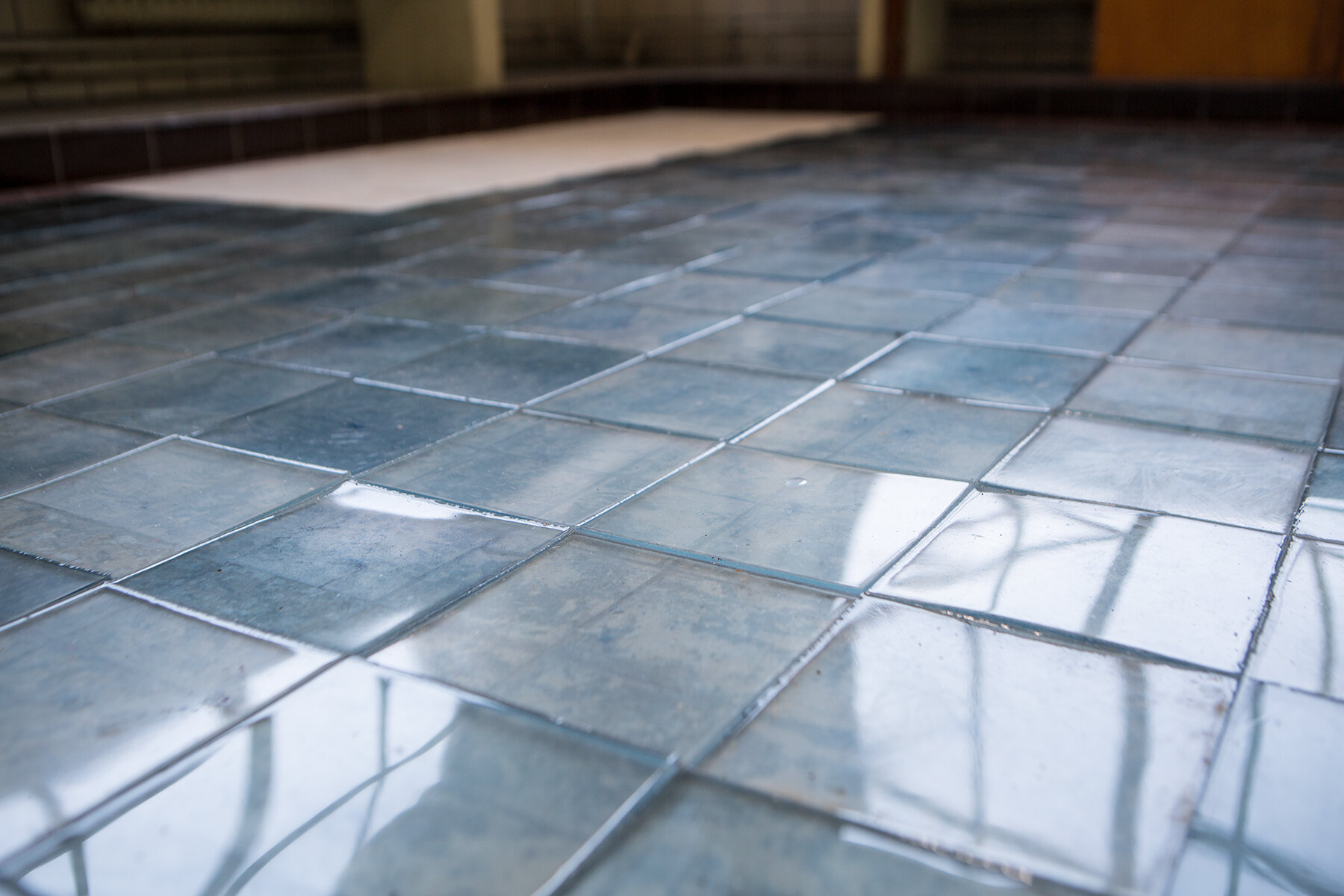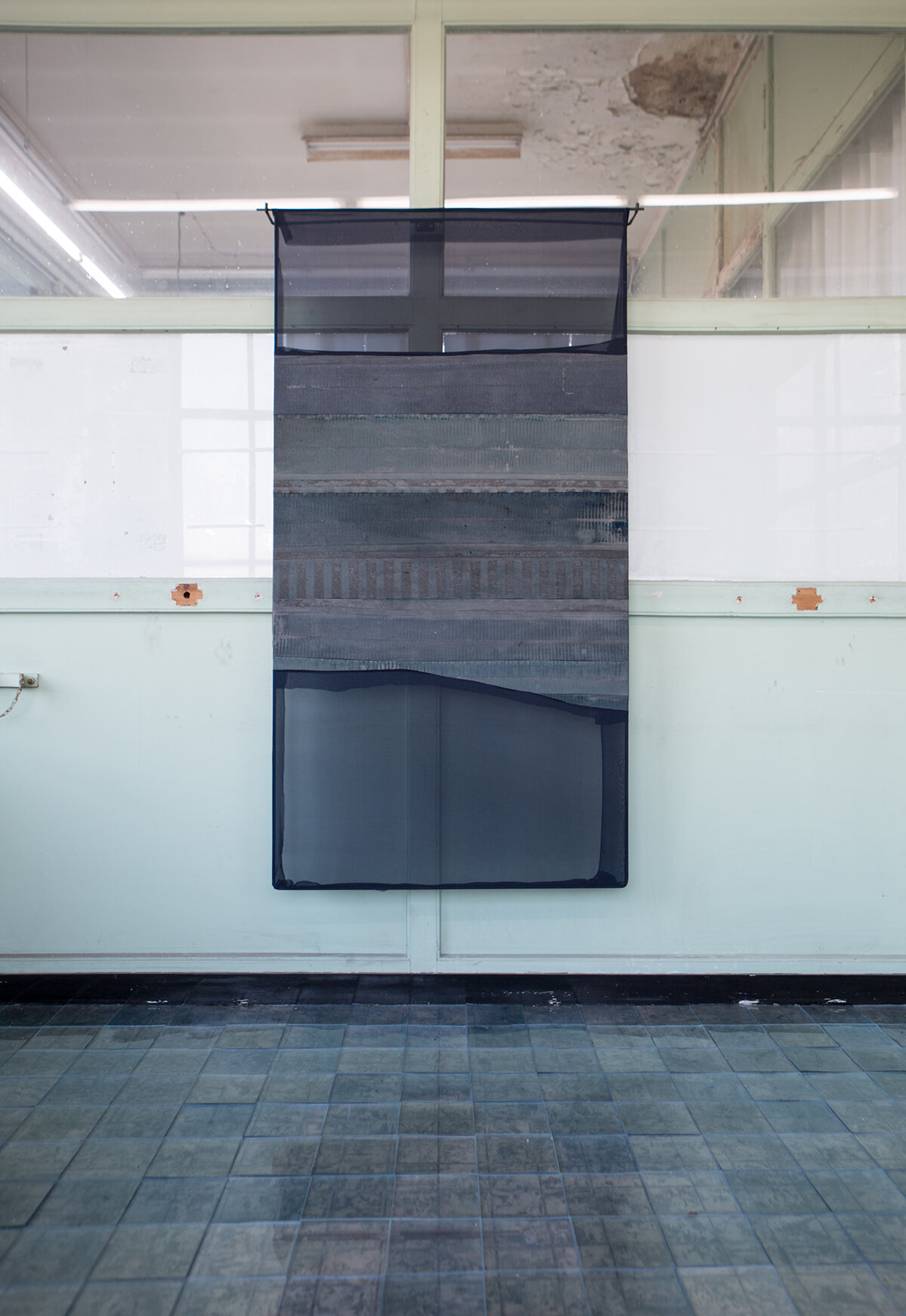THE SEA IN THE MIND OF A CAT
Dunaliella salina, Arthrospira platensis, fired clay, resin, silk, linen, metal
Our Still Lives
Sina Hensel is a painter who doesn’t use paint – at least not the standardized, readymade kind. Instead, she dyes her fabric with a natural powder extracted from specific varieties of algae, which produce remarkably bright and light sensitive shades of colour. After drying, she sews the painted pieces of fabric together and stretches them onto a metal structure that recalls the proportions of the artist’s body. Installed at some distance from the wall, the translucent paintings function as a projection screen. The light that shines through also fades the colours over time. In this shadow play between outside and inside, Hensel directs our attention to how forms of nature and forms of art can coexist and impact each other.
The word alga goes back to the Latin name for seaweed, but it also has a second, figurative meaning, “a thing of little worth”. Hensel keeps algae in her studio. Not to grow them for use (she gets them from a lab), but to acknowledge their existence. At home, Hensel shares a space with her cats, in collaboration with whom she produced a set of sculptures. Leaving moist clay tiles around the apartment, she observed how the cats would interact with them, sometimes even sleep on them, eventually capturing the traces of their activity. In the multi-part installation that Hensel conceived for a former veterinary school, these cat imprints are placed in contrast to a walkway of resin tiles, which are reserved for human visitors. Whereas clay absorbs light entirely, resin is a highly reflective surface with a watery shine. Dyed with the same algae as the neighbouring paintings, the resin tiles react to circumstances beyond the artist’s control. Staging different ways of inhabiting a space, Hensel includes the perspectives of plants, animals and people, imposing no hierarchy between them.
How to lend agency to a material, or even a living organism, is not a strict subject or method for Hensel, but above all a personal concern. Applied to art, it comes down to thinking about the means of production; how a work is made, and the responsibility that comes with it. For a painter, this implies questioning the conventions of the medium, such as the use of toxic turpentine or the idea of a painting as an autonomous, closed space. In working with algae, Hensel also found a way to go beyond aesthetic criteria in her use of colours. Algae produce colours that have a life of their own, which, in other industries, serve a technical function. In salt mines, they generate different shades of red that represent the level of salinity, indicating when the fleur de sel is ready for harvest. Just like in Hensel’s work, you won’t notice any change of colour unless you return after some weeks have passed.
Hensel makes a case for the inner rhythm and quiet qualities of a work, up to its smallest details. The tradition of still life painting remains an important reference for her in that regard, especially in the sensitive manner of Chardin, Claesz and Morandi. If sometimes these painters would incorporate their own image in the reflection of glassware, they could give equal care to the depiction of a dead animal awaiting preparation. In her own painterly process, Hensel likewise mirrors an empathy for the soul of things and beings, however minor their role in the cycle of life may appear.
Caroline Dumalin
